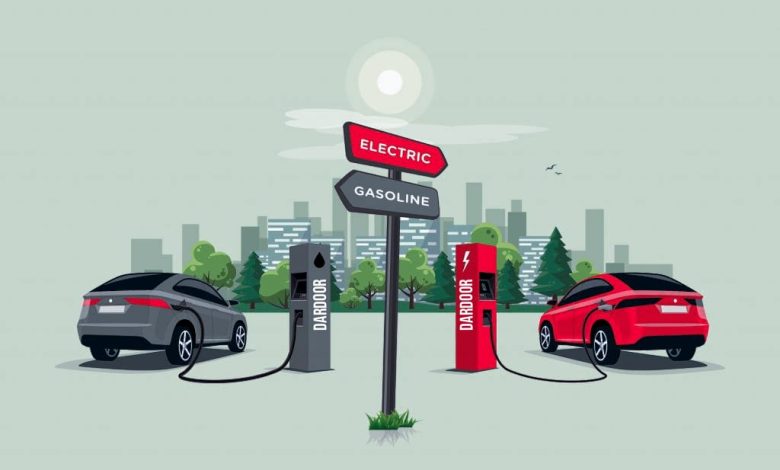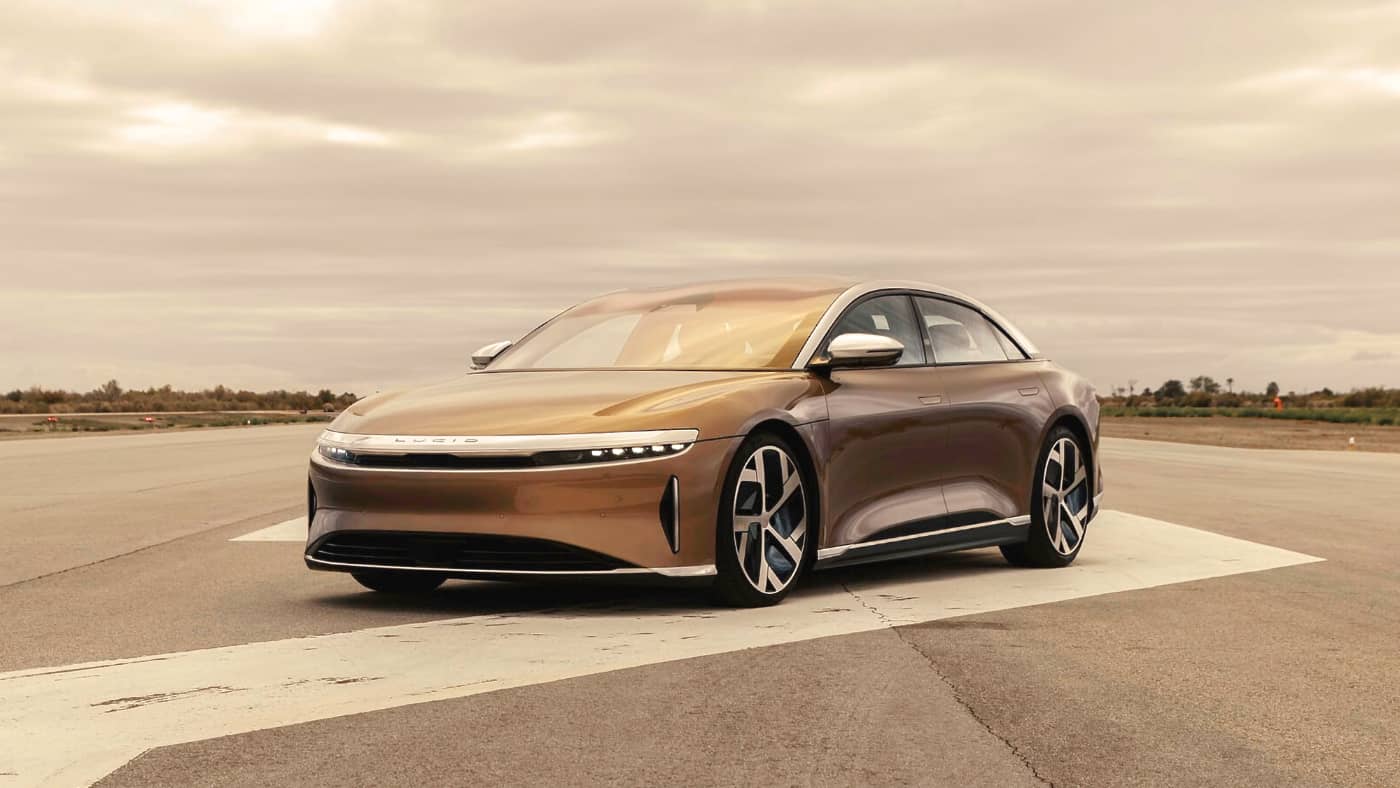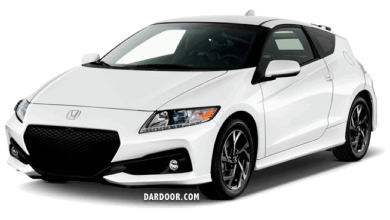Electric vs Hybrid Car: What are the Similarities and Differences?

Whether you’re buying a new car or just curious about the differences between hybrid vs electric cars remember this: it’s all about the source of “energy” and how they are powered. The hybrid car has two ways of powering itself – a classical internal combustion engine (ICE) like you would see in a petrol-powered car and an electric motor. An electric car only has an electric motor and relies solely on it to run. Easy right? let’s dig deep into this subject.
While they both are better for the environment than petrol cars, what are their similarities and differences? If you’re looking to buy an environmental-friendly car is one option better than the other? What are their pros and cons? This electric vs hybrid car article will answer your questions.
Table of Contents
ToggleWhat is a hybrid car and how does it work?
As we have mentioned earlier, a hybrid car is powered by an internal combustion engine (ICE) and an electric motor. How it works will depend on the type of hybrid car. There are three categories of hybrid cars: parallel, series, and plug-in types.
Parallel Hybrid Car (Mild Hybrid)
In a parallel hybrid car, both an internal combustion engine (ICE) and an electric motor works together to power the wheels. In a parallel hybrid system, the ICE will sometimes shut itself off during no-load conditions, like when the car is going downhill or is at a complete stop. It will instantaneously start the gas engine when needed.
Series Hybrid Car
In this type, an internal combustion engine 9ICE) charges a battery that the electric motor uses to power the wheels. In a series hybrid system, the ICE is used in high-load conditions while the electric system is used during low-load conditions.
Plug-in Hybrid Car
In a plug-in hybrid car, an ICE and electric motor power the wheels just like in a parallel hybrid car but the battery has a much larger capacity which means it has a longer electric range. Another feature that a plug-in hybrid has that the other types of hybrids don’t is that it can plug into or charge with an EV charging station. The plug-in hybrid is the closest to a battery-electric vehicle.
How does an electric vehicle work?
It is also known as a battery electric vehicle (BEV for a short) or all-electric vehicle (AEV). An electric vehicle uses a large traction battery pack to power an electric motor that moves the wheels. The battery must be recharged with an EV charging station.
Are There Any advantages of a hybrid car?
As we know, the hybrid vehicle helps you reduce your carbon footprint and spend less on gasoline costs. Here are the pros of a hybrid car:
- Great gas mileage
- Produces lower emissions
- Regenerative braking
- Financial incentives
- Great range (no range anxiety)
Great gas mileage
In comparison, for sure a hybrid car has better fuel economy and fuel efficiency. Hybrid electric cars have 25% to 30% and in some models can reach up to 50% better fuel mileage than ICE vehicles
Produces lower emissions
With a hybrid car, part of the time you’ll be relying on the electric motor to drive. An electric motor does not emit any poisonous emissions.
Regenerative braking
In a classical powered car, every time you brake to stop, the kinetic energy goes to waste, but with regenerative braking that energy is stored in the battery to be used later.
Financial incentives
Plug in hybrids are eligible for the US and Canada EV tax credit. Buyers of eligible hybrid vehicles could receive a tax credit of up to $7,500. There are other incentives offered by other organizations that can save you even more money. For example, the Califonia Clean Vehicle Rebate Project (CVRP) offers buyers of plug in hybrids a $1,000 rebate.
Great distance (no distance anxiety)
When you drive a hybrid car you won’t have to deal with distance anxiety like you may with an electric car. After the battery runs out, your car can still power on with its internal combustion engine.
While this is the case, there really is no reason for EV drivers to have range anxiety. It is really more of a mental and familiarity issue than reality. According to the most recent Federal Highway Administration (FHA) data from 2019, the average number of miles driven per day per driver in the US is 39 miles only. The average electric driving range is 200 – 300 miles with the high end being 400 – 500 miles.
What are the cons of a hybrid car?
- Limited electric range
- Fuel costs
- Maintenance is expensive
- Not as powerful
- Produces carbon emissions
Limited electric range
A hybrid car does not have a long electric range as an electric car does. For example, the EV with the current highest range is the Lucid Air at 516 miles, while the plug-in hybrid (the type of hybrid with the longest range) with the current highest electric range is the Hyundai Santa Fe Plug-in Hybrid at 31 miles.

Fuel costs
A hybrid car sometimes relies on an internal combustion engine, which runs on gasoline. Fuel costs fluctuate all the time and their exorbitant prices are sometimes the reason car buyers explore alternative options like a hybrid or electric cars. You won’t be able to rely on just the cheaper electricity rates with a hybrid car.
Maintenance is expensive
Maintenance costs for a hybrid are high since it has an ICE and an electric motor, which calls for double the work. The good news is the electric side of a hybrid doesn’t require much maintenance so most of what you will be going to the mechanic for is for issues that arise from the gas engine components of the vehicle.
Not as powerful
A hybrid car won’t have the acceleration “jump” like you would with an electric car. A plug-in hybrid car is the heaviest of the three types of hybrid electric cars because it houses so many more parts than the others and will be the slowest of the three. An EV has a quick take-off speed due to its electric motor and low center of gravity.
Produces carbon emissions
A hybrid car will still produce carbon emissions due to its gasoline engine. To truly have a net zero carbon footprint and not contribute to greenhouse gas emissions when you drive, you’ll have to own an EV.
What are the advantages of an electric car?
- Zero tailpipe emissions
- Robust financial incentives
- Instant torque
- Regenerative braking
- Nearly silent operation
- Less maintenance than ICE or hybrid vehicles
- Low center of gravity
- No more gas stations
Zero poisnous emissions
When you drive an EV, you emit zero tailpipe emissions. An EV is the best car to drive if you want to be environmentally friendly. When compared with an ICE vehicle, the production of an EV can cause more greenhouse gas emissions, yet over the lifetime of an EV, you produce fewer carbon emissions.
Robust financial incentives
Battery-electric vehicles are currently having a moment and have the most robust incentives as compared with other similar incentives. Electric vehicles have more rebates and tax credits and are eligible for more cash than hybrid vehicles.
Instant torque
An electric has instant torque, almost like an expensive sports car. When you accelerate from a stop sign an EV takes off incredibly fast. Many new EV drivers find the instant torque a delightful and fun surprise.
Regenerative braking
Just like with a hybrid car, an electric car has regenerative braking and can store what would normally be wasted kinetic energy for later use.
Nearly silent operation
An EV is nearly silent and is a nice alternative to loud gas-engine cars. An electric car is also quieter than a hybrid car.
Less maintenance than ICE or hybrid vehicles
EVs don’t require much maintenance. No more oil changes and fluid changes (except for windshield wiper and brake fluid replacement). An electric car doesn’t have as many moving parts as a hybrid car or a traditional car so it won’t need frequent trips to the mechanic. Most of your maintenance will be rotating tires, brake replacement, coolant refill, cabin air filter replacement, and similar minor issues.
Low center of gravity
An electric car has a low center of gravity due to its battery pack. This means better handling and a lower chance of a rollover accident.
No more gas stations
With an EV you will never have to go to a gas station again! You can go to a public charging station to “juice” up, but you’ll have to deal with issues like having to figure out what to do while your car charges or deal with higher prices than if you charged with a Level 2 home charging station. The best way to keep an EV battery charged is to have a home charging station. WattLogic offers an easy EV charging solution without the hassle.
What are the disadvantages of an electric car?
- More expensive than ICE or hybrid vehicles
- Range anxiety
- Battery replacement
- Fewer choices
- EV charging infrastructure needs to grow
More expensive than ICE or hybrid vehicles
An all-electric car is usually more expensive than a traditional car or hybrid vehicle. The sticker price may be higher but you end up saving more through gasoline savings and incentives.
Range anxiety
One of the biggest reasons drivers are afraid to buy an electric car is range anxiety or the fear that one will become stranded if their EV battery runs out. This is an unwarranted fear as mentioned earlier in this article. The average number of miles driven by a US driver is 39 miles and the average electric driving range is about 250 miles.
Battery replacement
An EV battery replacement can be a large expense, anywhere from $4,000 to $20,000. You can buy a refurbished battery for much less. Electric car batteries have lifespans of 8 to 15 years so you won’t have to replace them very often.
Fewer choices
Since EVs have only recently become popular in the automotive industry, you won’t have as many vehicle options as you would with ICE vehicles. Yet, auto manufacturers are releasing new EVs every few months and many automakers have made commitments to no longer sell gas-powered cars in the future. For example, General Motors has an all-electric target for vehicles by 2035 and plans to be carbon neutral by 2040.
EV charging infrastructure needs to grow
The US EV charging infrastructure is currently not keeping pace with EV ownership. The federal government and local governments are working to change this. There are plans to build a huge network of EV charging stations across the country.
If you have a home EV charger you won’t have to worry about looking for a place to charge. A home charging station is a perfect way to charge an electric car overnight. You can begin each day with a full battery. Reach out to WattLogic for the simplest, least stressful way to get a residential EV charger!
Is it better to have a hybrid or electric car?
Hybrid or electric cars are both great choices. If you’re looking to lower your gasoline expenses and do something good for the environment and the quality of your air both help you achieve those wonderful goals.
When you take into account all of the factors we’ve discussed in this article, EVs are a better investment. When compared with a hybrid car, an electric car is better for the environment saves you more on petrol costs, and has added features like being able to charge in the comfort and safety of your own home and being able to drive in the High-Occupancy Vehicle (HOV) lane.
Download Related Books:
- AC Motor Control and Electrical Vehicle Applications.
- Advanced Hybrid and Electric Vehicles System Optimization and Vehicle Integration.
- Electric and Hybrid Vehicles Technologies Modeling and Control a Mechatronic Approach.
- Hybrid electric and fuel cell vehicles, 2nd edition.
- Hybrid electric vehicles principles and applications with practical perspectives.
- Hybrid electric vehicles principles and applications with practical perspectives, 2nd edition.
- Hybrid systems optimal control and hybrid vehicles theory methods and applications.
- Hybrid vehicles and hybrid electric vehicles new developments energy management and emerging technologies.
- Modern electric hybrid electric and fuel cell vehicles fundamentals theory and design, 2nd edition.







